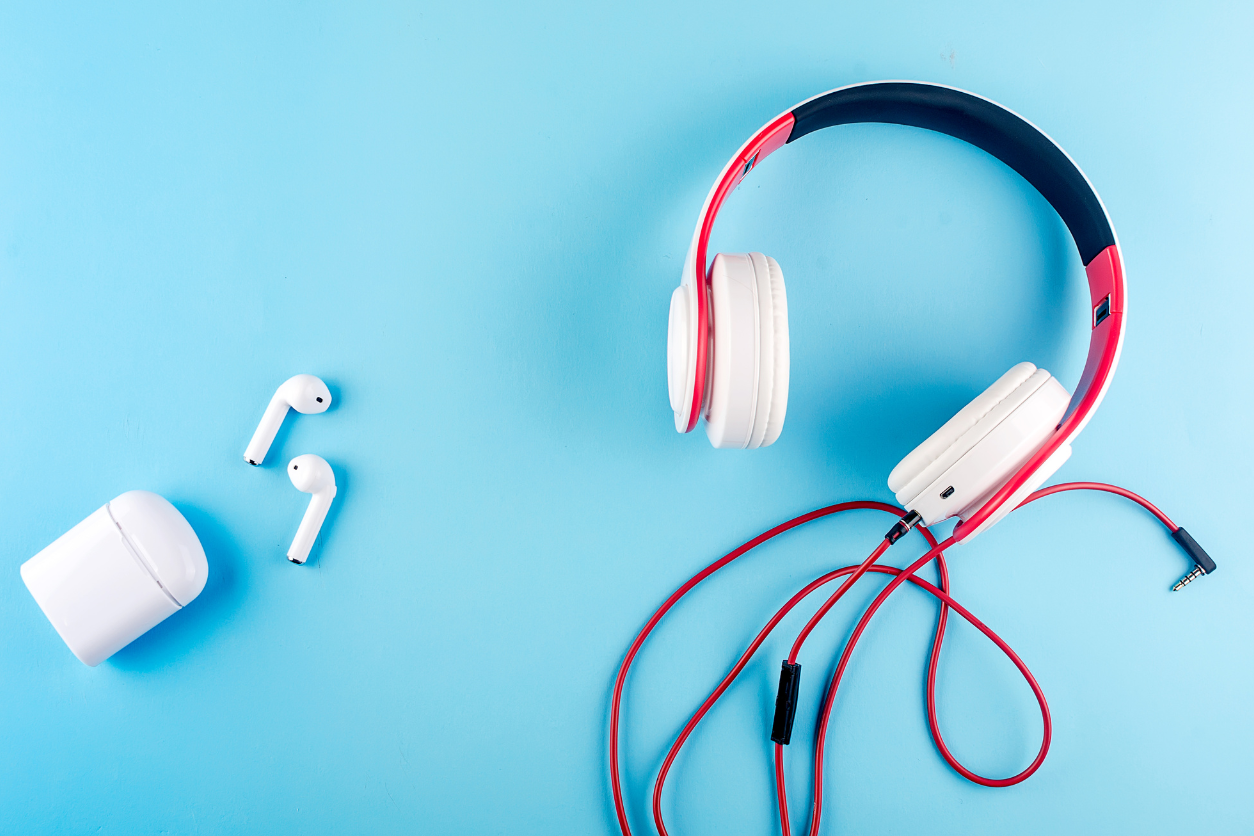Earbuds vs. Headphones: Here Is Everything You Need To Know

Are you trying to decide between earbuds or headphones for your listening needs? You’re not alone in trying to figure out the difference between the two. This is a debate that rages on among audiophiles, musicians, and casual listeners alike. In this post, we’ll compare earbuds and headphones, so you can make an informed decision about which type is right for you.
We’ll discuss the key differences between both options, and the advantages and disadvantages of each. From sound quality to comfort, we’ll cover everything so you can choose the right product for your needs. No matter your budget, you’ll be sure to find the perfect solution.
The Main Differences
Comfort and Fit
Headphones typically provide more comfort due to their larger size, with the ability to adjust for an exact fit for your head size. Earbuds may be uncomfortable for some people due to their small size and the need to be inserted directly into the ear canal.
Portability
Headphones tend to be larger and heavier than earbud varieties, making them less portable and less suitable for outdoor use or traveling. Earbuds are small enough to fit in a pocket or bag easily.
Price Point
Headphones tend to cost more than earbuds, particularly if they offer features such as noise cancellation, found in more expensive noise-canceling headphones. Earbuds typically have lower price points due to their smaller form factor and lack of features such as active noise cancellation.
Sound Quality
Noise Isolation
Over-ear headphones offer superior noise isolation thanks to their ability to completely cover the ears, while on-ear models provide some insulation against external noise but will not block it out entirely. In-ear models provide adequate sound isolation but may not block out all external noise depending on their design and fit within the ear canal.
Frequency Response
Over-ear headphones generally offer better frequency response than either on-ear or in-ear models due to their larger speaker drivers, which can reproduce sound more faithfully across a range of frequencies. On-ear models provide a slightly reduced frequency response but are still adequate for most applications. In-ear models offer the lowest frequency response but can still produce good sound quality, depending on their design.
Bass Response
Over-ear headphones have a richer bass response thanks to their larger drivers, which can better reproduce lower frequencies. On-ear models will have slightly less bass response than over-ears but still offer decent performance compared to most in-ear headphones, whose bass response is limited by their small size.
Durability
Materials
Over-ear headphones have stronger construction materials, such as metal frames and thicker padding, which makes them more durable than on-ear varieties. On-ears are made from lighter materials, such as plastic or foam, which may make them more prone to breakage if mishandled. In-ears are usually made from mostly plastic with some metal components, which makes them the least durable option.
Wireless Technology
Some headphones, particularly over-ears, come with wireless technology, such as Bluetooth, allowing you to connect your device wirelessly instead of using traditional cables. This feature comes at an additional cost and reduced battery life, so potential buyers need to weigh whether this is worth investing in.
Battery Life
Wireless over-ears have shorter battery life when compared with wired varieties because they have more components onboard, which draw more power as they transmit audio signals. It’s important for users who plan on using these devices frequently outdoors to ensure they have adequate battery life before leaving home. Earbuds usually don’t require power since they usually connect via traditional wires from a source device.
Styling
Colors
Headphone colors vary more than those available for earbuds. This feature is because over-ear headphones have more surface area for colorful designs and patterns. Earbuds are not as obvious when they are worn, so they are usually only available in one color.
Customization Options
There are more customization options available on headphones due to their larger size. You can upgrade the sound quality, add after-market accessories, and introduce new designs. Earbuds do not have these options, but a customizable fit is possible. Certain manufacturers have silicone molds to shape the earbud directly to your ear.
Conclusion
Headphones provide better sound quality and noise isolation, while earbuds are more portable and less expensive. Each type has its advantages and disadvantages in terms of comfort, frequency response, bass response, durability, styling, and wireless technology. It is crucial to consider all of these factors when choosing the right product. No matter your budget or preferences, you can find the perfect headphones or earbuds for your listening needs.
Your Trust, Our Core Commitment
At Rising Tech, earning and maintaining your trust is the cornerstone of our mission. We're dedicated to transparency, impartiality, and the relentless pursuit of truth in every article, review, and recommendation we publish. Our commitment to these principles ensures that you, our valued reader, are always equipped with reliable and unbiased information. Let us be your trusted guide in the ever-evolving world of technology.